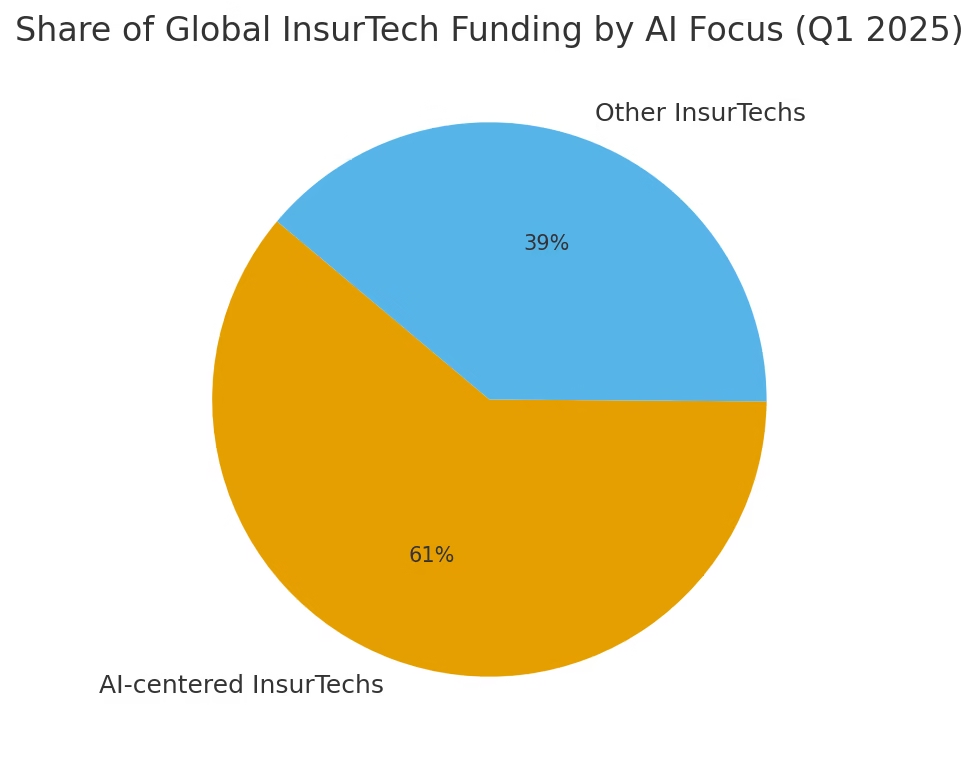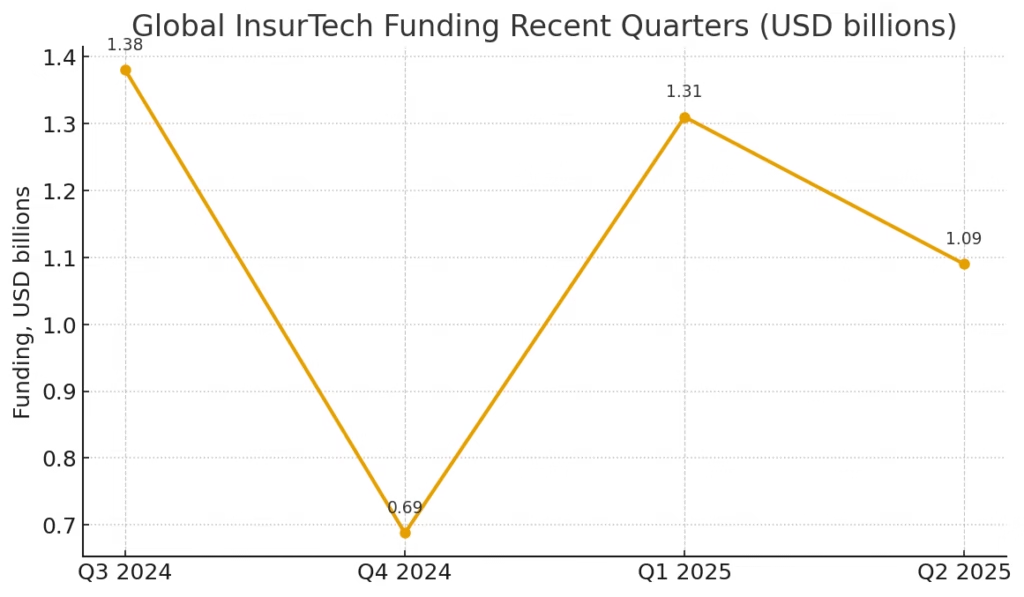
Why InsurTech Matters Today
Technology has redefined how we shop, bank, and even connect with loved ones. Now it is reshaping insurance through what experts call InsurTech trends. For decades, insurance was often viewed as a slow, paperwork-heavy, and sometimes confusing industry. Today, technology in insurance is eliminating inefficiencies, making coverage more accessible, and transforming the customer experience.
Think about how many of us now buy car or health insurance entirely online without meeting an agent. Or how artificial intelligence helps detect fraud before it impacts customers. These are not futuristic ideas anymore. They are live examples of how InsurTech trends are shaping the industry.
The global InsurTech market size has grown rapidly in the past decade, attracting billions in investments.
What is InsurTech?
The term InsurTech is a blend of “insurance” and “technology.” It refers to startups, tools, and innovations that disrupt traditional insurance models. While fintech revolutionized banking, InsurTech is now transforming how policies are designed, distributed, and serviced.
Instead of relying only on agents and manual paperwork, today’s insurance industry leverages:
- Artificial intelligence to assess risk more accurately
- Big data analytics to personalize policies
- Blockchain for transparent claims management
- Mobile apps for instant policy access and claims filing
This shift is particularly important in tier 1 countries like the US, UK, Canada, Singapore, and Australia, where customer expectations for speed and digital convenience are very high.
The Early Waves of InsurTech Trends
To understand where we are today, let’s look back.
1. Online Policy Comparison Tools
The first wave of technology in insurance came with comparison websites. Consumers could suddenly compare multiple insurers’ quotes in minutes. This transparency empowered people to choose not only the cheapest but also the best coverage for their needs.
2. Mobile-First Insurance Apps
With smartphone adoption, companies began creating apps where customers could view policies, pay premiums, or submit claims instantly. Millennials and Gen Z quickly embraced this because it aligned with their lifestyle of doing everything on-the-go.
3. AI-Powered Chatbots
No one likes waiting on hold for customer service. InsurTech trends brought chatbots that provide 24/7 support, answer basic queries, and even process claims. For instance, Lemonade, a popular InsurTech startup, uses AI to approve simple claims in minutes.

Real-Life Example: Lemonade Insurance
Lemonade disrupted the US renters and homeowners insurance market by using AI and behavioral economics. Instead of traditional claim adjusters, their AI bots handle claims, reducing costs and making the process smoother. This not only increased efficiency but also built trust among younger, tech-savvy customers.
Question for You:
Would you trust an AI chatbot to settle your claim faster, or do you prefer a human agent for peace of mind?
Comment below with your thoughts.
Why Millennials and Gen Z Are Driving InsurTech Trends
In tier 1 countries, younger generations expect convenience and speed. They do not want to fill long forms or wait weeks for approval. For them, technology in insurance is not optional, it is a basic expectation.
A Deloitte survey revealed that more than 60 percent of millennials would switch insurers for better digital services. This consumer demand is why traditional insurers are partnering with InsurTech startups or building their own platforms.
The Latest InsurTech Trends Transforming Insurance
The past five years have been a turning point for the industry. Let’s explore the biggest InsurTech trends that are actively reshaping how insurers, customers, and technology interact.
1. Artificial Intelligence and Machine Learning
AI is no longer a buzzword. In insurance, it is being used to:
- Predict risk based on customer behavior
- Detect fraudulent claims
- Speed up underwriting and approvals
For example, Progressive uses AI to analyze telematics data from its Snapshot program. Drivers who demonstrate safe driving habits pay lower premiums. This personalization is only possible through advanced machine learning.
2. Blockchain for Transparency and Security
Blockchain technology in insurance is making waves by reducing fraud and ensuring transparency. Imagine claims being verified automatically on a secure ledger, reducing disputes between customers and insurers.
Singapore-based InsurTech firms are already experimenting with blockchain for travel insurance claims. If your flight gets canceled, the claim is triggered automatically, and you are paid within hours.
3. Big Data and Predictive Analytics
Insurance companies now process massive amounts of data to create customized policies. For instance, health insurers in the US are integrating fitness tracker data into wellness programs. A customer who consistently meets their daily step goal might get a discount on premiums.
Quiz:
Would you share your fitness tracker data with an insurer if it meant cheaper premiums?
Share your answers in the comments.
4. On-Demand Insurance
Not everyone needs insurance 24/7. That is why on-demand coverage has grown in popularity. Imagine renting a car for two days and instantly buying coverage for just those days from your phone. Companies like Trov pioneered this model, and it is rapidly expanding in markets like the UK and Australia.
5. Usage-Based Insurance (UBI)
Usage-based insurance is one of the fastest-growing InsurTech trends. It charges premiums based on actual usage instead of flat annual rates. For example, auto insurance policies track how much and how safely you drive. The less risk you present, the less you pay.

How Technology in Insurance Benefits Consumers
The adoption of technology in insurance is not just about efficiency for companies. It is also about creating better customer experiences.
- Faster claims approval: AI chatbots can process straightforward claims within minutes.
- Lower premiums: Data-driven personalization rewards safe drivers and health-conscious individuals.
- Improved transparency: Blockchain reduces fraud and keeps records immutable.
- More convenience: Apps and portals allow instant policy access, renewals, and support.
Example:
A Canadian customer using an app-based car insurance platform noticed they could reduce premiums by switching to a UBI plan. Over one year, they saved nearly 20 percent just by allowing their driving data to be tracked.
The Challenges of InsurTech
While InsurTech trends look promising, they also bring challenges that cannot be ignored.
- Data Privacy Concerns
With insurers collecting health, driving, and lifestyle data, many consumers worry about how their information is used. Strong cybersecurity measures are critical to maintain trust. - Regulatory Barriers
Insurance is heavily regulated, especially in countries like the US and UK. Adapting new technologies often means navigating strict legal frameworks that may slow down innovation. In the US, regulators are closely monitoring InsurTech adoption to ensure compliance. - Digital Divide
While younger generations are comfortable with mobile apps, older customers may prefer traditional methods. Insurers need to balance both demographics. - Trust in AI
Would you trust an algorithm to decide your claim payout? Many customers are still skeptical, preferring human oversight for high-value claims.
Case Study: InsurTech in Health Insurance
Let’s take health insurance in the US as an example. Companies are integrating technology in insurance to improve patient engagement.
- Telemedicine platforms allow virtual doctor visits covered by insurers.
- AI predicts chronic conditions, enabling early interventions.
- Wearable devices track health metrics, rewarding users for maintaining healthy habits.
In Australia, Bupa introduced app-based services for mental health support, integrating them directly into its insurance plans. This makes mental health care more accessible and reduces stigma.
The Future of InsurTech Trends: What to Expect by 2030
InsurTech is still in its early stages. Over the next five years, we will see deeper adoption of technology in insurance across global markets. Here are some future trends to watch.
1. Hyper-Personalized Insurance
Policies will no longer be one-size-fits-all. With advanced AI and big data, every policy could be tailored to your exact lifestyle, risk profile, and even daily activities. Imagine your life insurance premium adjusting dynamically based on your health habits tracked through wearables.
2. Embedded Insurance
Insurance will increasingly be bundled into the products or services you already use. Buy a car, book a flight, or sign up for a subscription, and coverage could be included instantly without paperwork. This is already being tested in the UK with travel platforms offering instant embedded coverage.
3. Claims Automation with Smart Contracts
Blockchain will allow smart contracts to execute claims automatically. For instance, if your flight is delayed by more than two hours, the claim would be settled instantly without you even filing one.
4. Expansion of Digital-Only Insurers
Fully digital insurers like Lemonade and Root will continue growing. By 2030, many traditional players may need to fully reinvent themselves to stay competitive against these agile, tech-first companies.
Opportunities for Insurers and Consumers
For Insurers
- Lower costs by reducing manual claims handling
- Expand into new markets with digital platforms
- Gain customer loyalty through convenience and personalization
For Consumers
- Access to fairer premiums through usage-based models
- Faster, more transparent claim processes
- Easier access to global insurance options across borders
Question:
Would you switch to a fully digital insurer if it guaranteed faster claims and cheaper premiums, or do you still prefer a mix of digital and human support?
Share your thoughts in the comment section.
How to Choose the Right InsurTech Provider
With so many digital-first insurers and startups emerging, consumers need to be strategic. Here are a few things to consider before choosing one.
- Reputation and Licensing
Check if the provider is regulated in your country. Many startups partner with established insurers to meet legal requirements. - Digital Experience
Look at the quality of their app or platform. Is it easy to access policies, make changes, and file claims? - Claims Process
Read reviews or case studies about how quickly they process claims. This is the most important factor for customer satisfaction. - Pricing and Flexibility
Compare policies to see if the pricing model fits your needs. Usage-based or on-demand insurance could save you money if you are a low-risk user. - Data Security
Since InsurTech relies on data collection, ensure the provider has strong security practices to protect your personal information.

Real-World Example: Tesla Insurance
Tesla is a fascinating case study. By using data directly from its vehicles, it offers car insurance with premiums based on real-time driving behavior. This is one of the clearest examples of how technology in insurance is merging seamlessly with everyday life. It demonstrates the direction the industry is heading: embedded, personalized, and data-driven.
My Final Thoughts: Why InsurTech Trends Matter
The rise of InsurTech is not just about technology. It is about creating a better relationship between insurers and customers. Transparency, personalization, and speed are no longer luxuries; they are expectations.
For insurers, the challenge is to innovate while maintaining trust. For consumers, the opportunity is to enjoy fairer, faster, and more flexible coverage than ever before.
Whether you are in the US, UK, Canada, Singapore, or Australia, the future of insurance is undeniably digital. The companies that embrace InsurTech trends will lead the industry, and those who resist may struggle to survive.
Internal Resource
Building wealth in your 30s is not just about aggressive investing, it is about smart choices and balance. If you are new, use our free stock screener for beginners to shortlist quality investments. Alongside growth, do not ignore safety, our insurance Comparison guide will help you to identify the best insurance that suits for you and your family.



